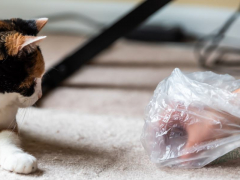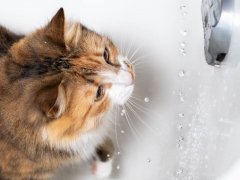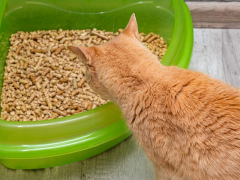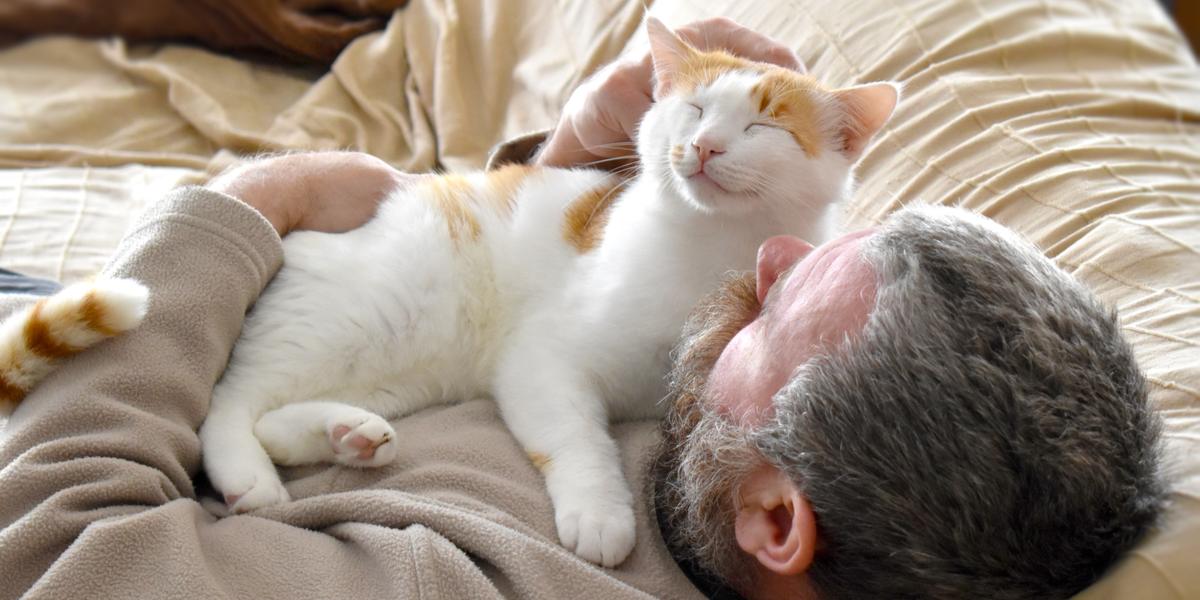
It’s one of the true pleasures for any cat lover. You are snuggling down on the couch to watch a movie when your furry best friend climbs onto your chest and falls asleep.
Or, less pleasant perhaps, you’ve just got yourself comfy in bed, ready to sleep, and your kitty decides there is nowhere else they would rather be than squarely on your chest, leading to hours of being unable to move!
Have you ever found yourself wondering, why does my cat do this? You are not alone! In this article, we will consider the reasons cats choose to sleep on their owners.
What Is Normal When It Comes To Cats And Sleep?
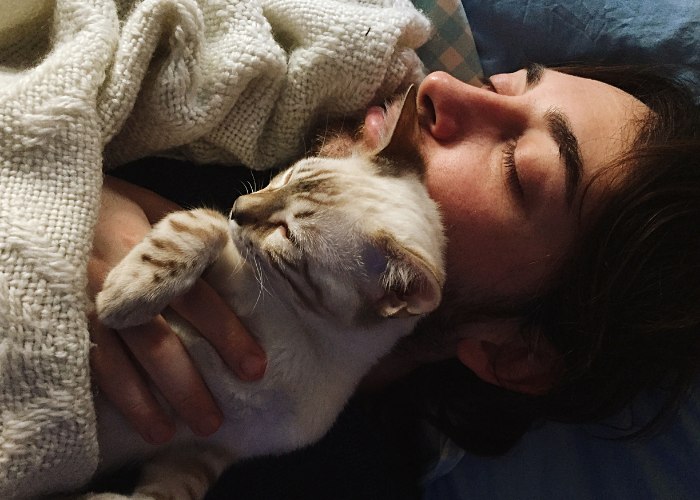
Sleeping a lot during the daytime means that your cat is ready and raring to go when they need to be.
Sleep is very different for our cats than it is for us. First, cats sleep a lot more than we do. On average, cats sleep about 15 hours a day, but some less active kitties may sleep up to 20 hours daily! Cats also tend to sleep in shorter catnaps throughout the day rather than in one long block of sleep.
This sleeping pattern revolves around cats’ natural hunting behaviors. Cats’ natural hunting and feeding behaviors are to hunt multiple times throughout a 24-hour period, usually at dawn and dusk or even through the night when their prey is most active.
They eat little and often, and rest periods are needed for digestion between feeds or to recuperate after a hunting exertion. Sleeping a lot during the daytime means that your cat is ready and raring to go when they need to be.
Why Do Cats Purr When They Are Sleeping?
What Does Purring Mean?
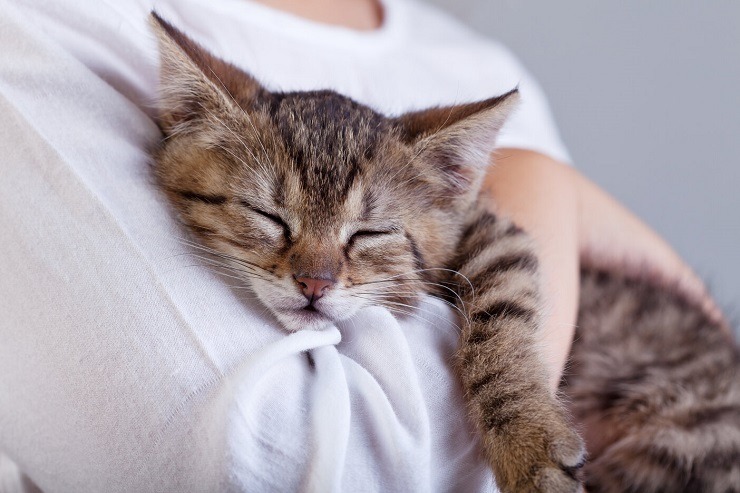
Purring happens between cats during many social interactions, including when they groom one another, rub faces, or are resting together.
Purring is a form of social communication for cats. A cat will purr for many reasons; this purr can sound different depending on its meaning. Purring can signify anything from a friendly greeting to a care-soliciting call.
Purring happens between cats during many social interactions, including when they groom one another, rub faces, or are resting together. In negative or painful situations, purring can also show stress, anxiety, or fear.
As such, purring can’t always be solely attributed to a positive welfare situation for the cat in question. Instead, it has been hypothesized to be a “contact soliciting signal”—by making a purring sound, your cat is requesting contact with her family group or owner.
Also Read: 7 Common Cat Vocalizations And What They Mean
The context in which your cat is purring can be used to work out what kind of mood or feeling your cat is experiencing. Some research shows that cats even have different sounding purrs to elicit different responses from their owners!
What Does It Mean When My Cat Purrs In Her Sleep?
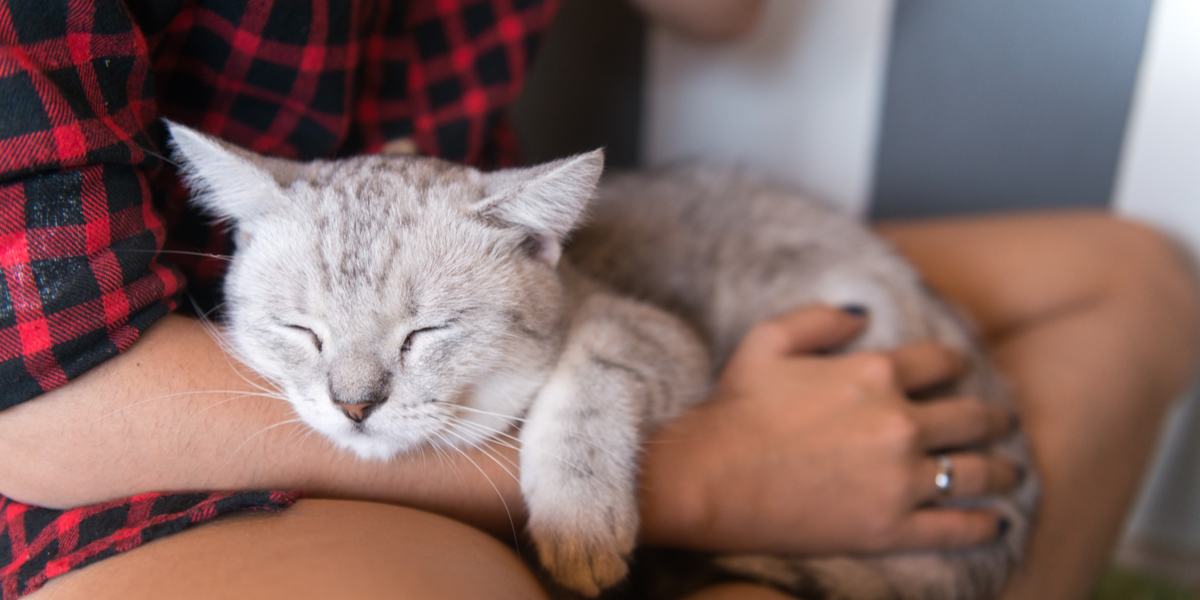
It is probably no surprise that cats will seek out warm places for their nap time, whether a radiator, freshly laundered clothing, or even their human’s body.
If your cat is curled up, sleeping and purring on your lap, this is most likely representative of contentment and relaxation. Those deep throaty rumbles are your cat’s way of showing they are comfortable and happy in this social situation with you.
Why Does My Cat Lay On My Chest When Sleeping Or Relaxing?
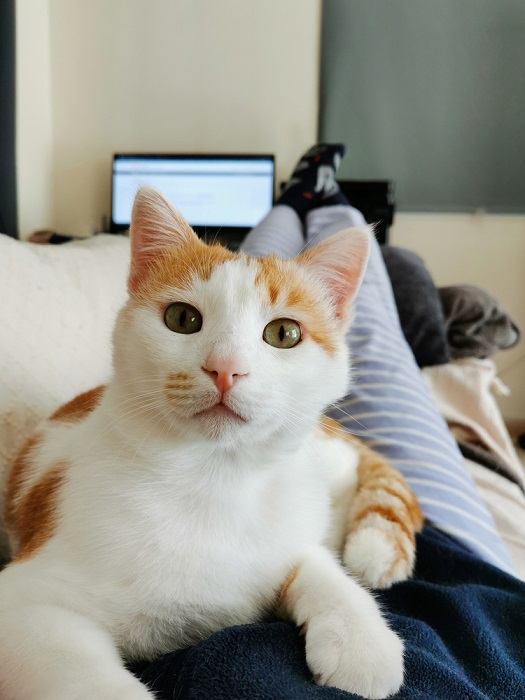
No one knows exactly why cats like sleeping on chests, but it might just feel warm and secure.
So, you’ve shelled out loads of dollars on premium heated cat beds, created perfect cat-friendly nooks and perches, and your cat has access to your whole house (and maybe even the outside world!).
Also Read: 8 Most Common Cat Sleeping Positions and What They Really Mean
Why then does your feline friend still choose to seek you and cuddle up on top of your chest and not their pet bed? There are a few proposed theories for this behavior discussed below.
Warmth
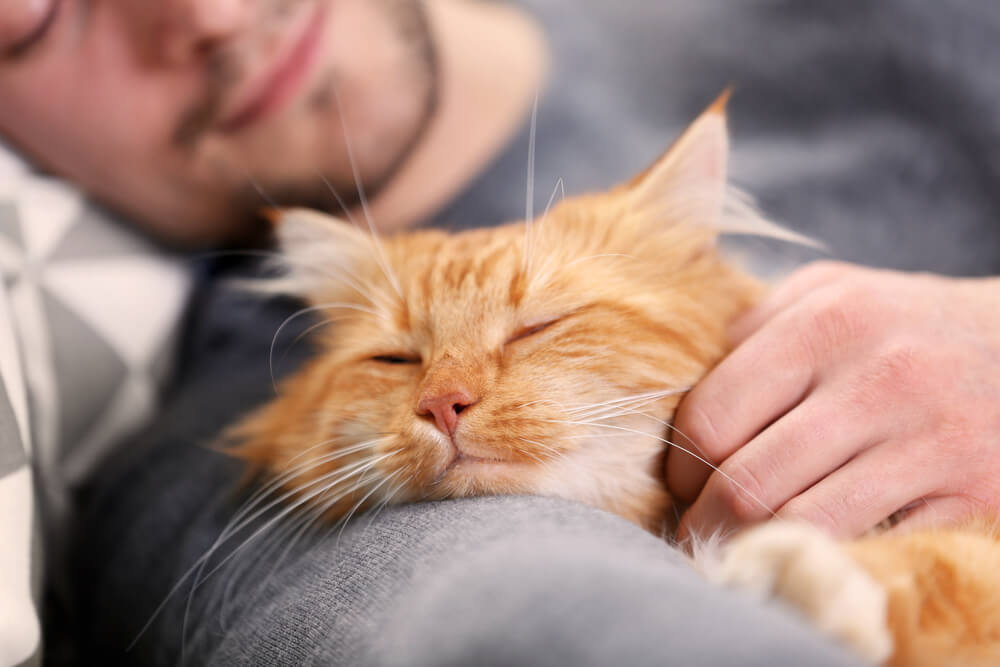
Lying on their person provides your kitty with a truly warm spot because of your body heat, making nap time extra toasty!
It is probably no surprise that cats will seek out warm places for their nap time, whether a radiator, freshly laundered clothing, or even their human’s body. Lying on their person provides your kitty with a truly warm spot because of your body heat, making nap time extra toasty! All parts of your body can make a comfortable place for your cat to sleep.
Safety
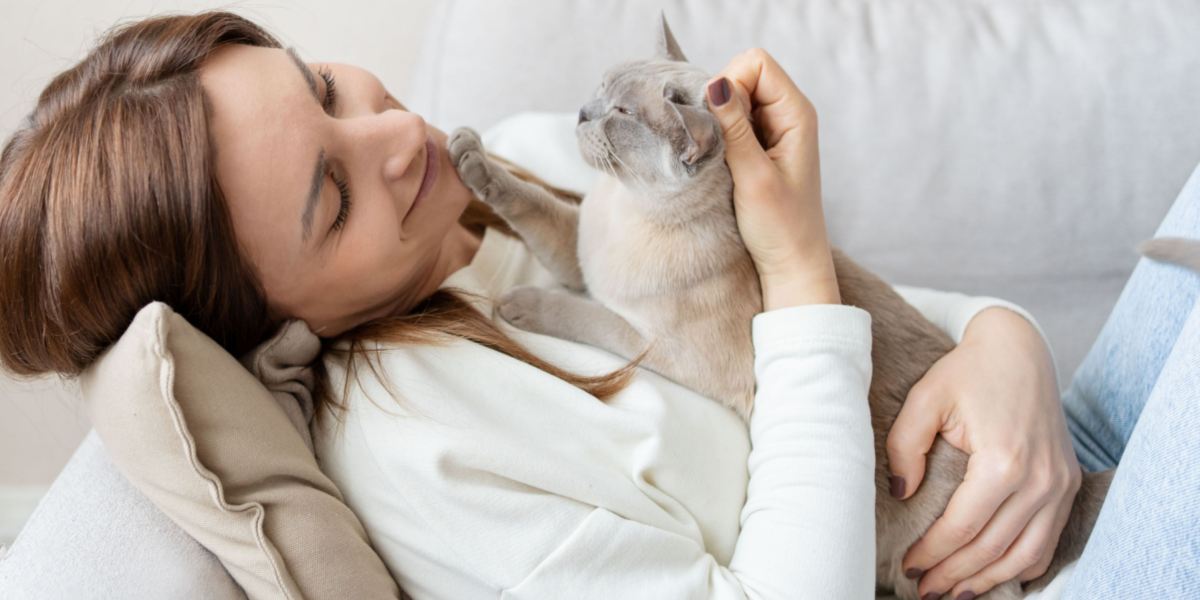
Nap time is the time when your kitty is at her most vulnerable. By choosing to sleep with you, your cat recognizes you can protect her if necessary, and sees you as one of the safest places to be.
Trust
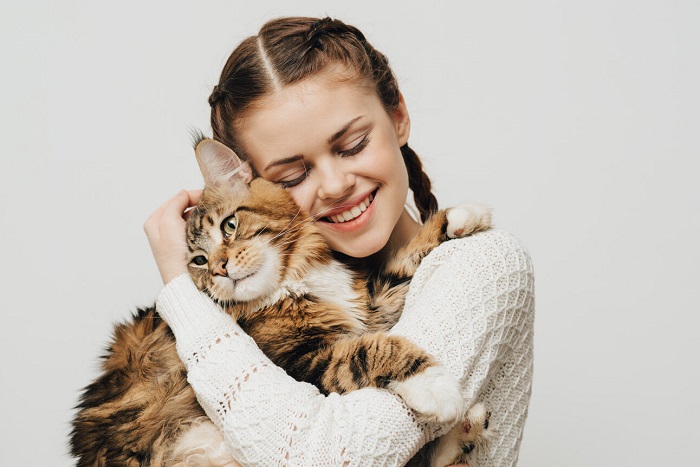
Additionally, your kitty choosing to seek you out at bedtime demonstrates that she trusts you during her vulnerable sleeping time.
Companionship
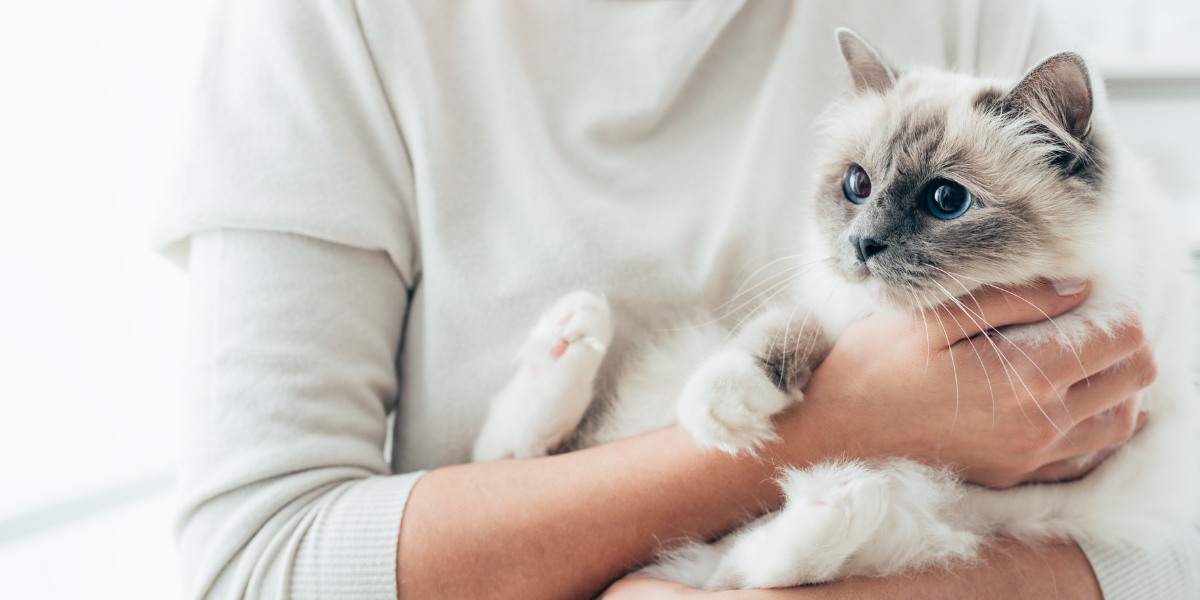
Feral cats will often choose to live in loosely bonded colonies and have been shown to seek out companionship during periods of rest and relaxation. Your cat choosing to come and snuggle with you is likely a reflection of this instinctual behavior.
Why Is My Cat Kneading Me While Lying On My Chest?
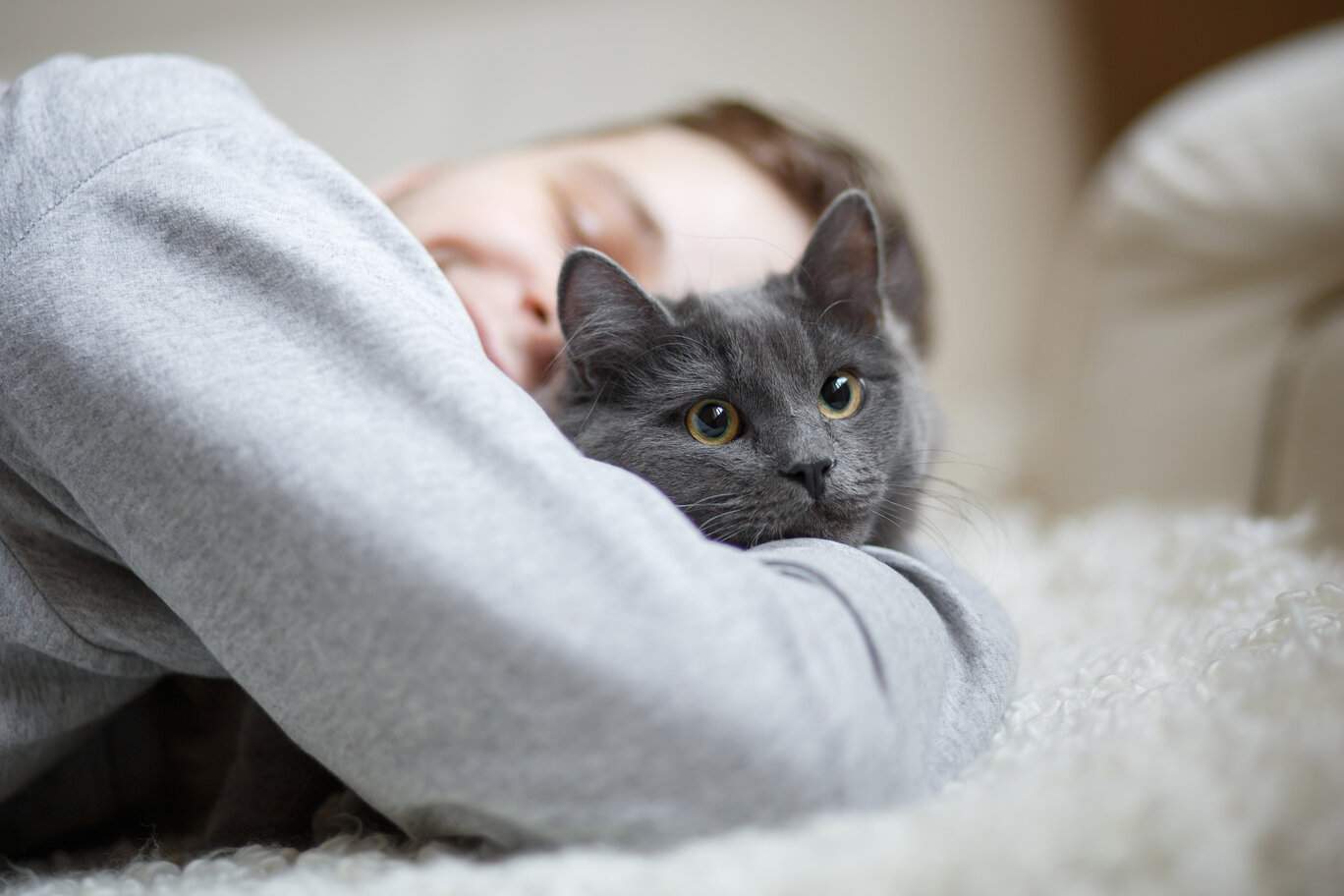
Kneading behavior begins in kittenhood; kneading at mom helps to stimulate her milk production.
Proposed theories for why it continues into adulthood include residual comfort memories from kittenhood while content, making the sleeping area more comfortable, scent-marking (cats have scent glands on their paws which release pheromones), or even simply stretching.
Sometimes this kneading can be a little painful, but placing a blanket between you and your kitty can protect you from those sharp claws while allowing your cat to show this content behavior.
My Cat Suckles Or Chews On Me While Lying On My Chest. Is That Normal?
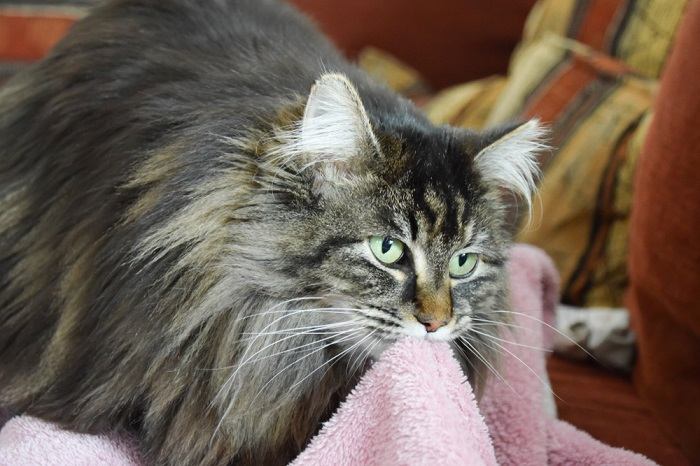
Sucking on blankets or clothing is a self-soothing or comfort-seeking behavior left over from kittenhood.
While not every adult cat will suck or nurse on blankets, cat toys, or their owner, when relaxed, some will. There are several suggestions why cats do this, with the most popular being a self-soothing or comfort-seeking behavior.
Therefore, some cats will do this when stressed or anxious, not just during times of rest and relaxation. Anecdotally, it is more prevalent in cats that have been removed from their mom before they were ready.
Also Read: 5 Visual Signs of a Stressed Cat and How to Help
While some cats will grow out of this behavior, others will do it for their whole life. If your cat suddenly starts suckling when they have never done it before, this can be a sign something is amiss, and a chat with your local veterinarian may be advisable.
My Cat Doesn’t Sleep On Me; Should I Be Worried?
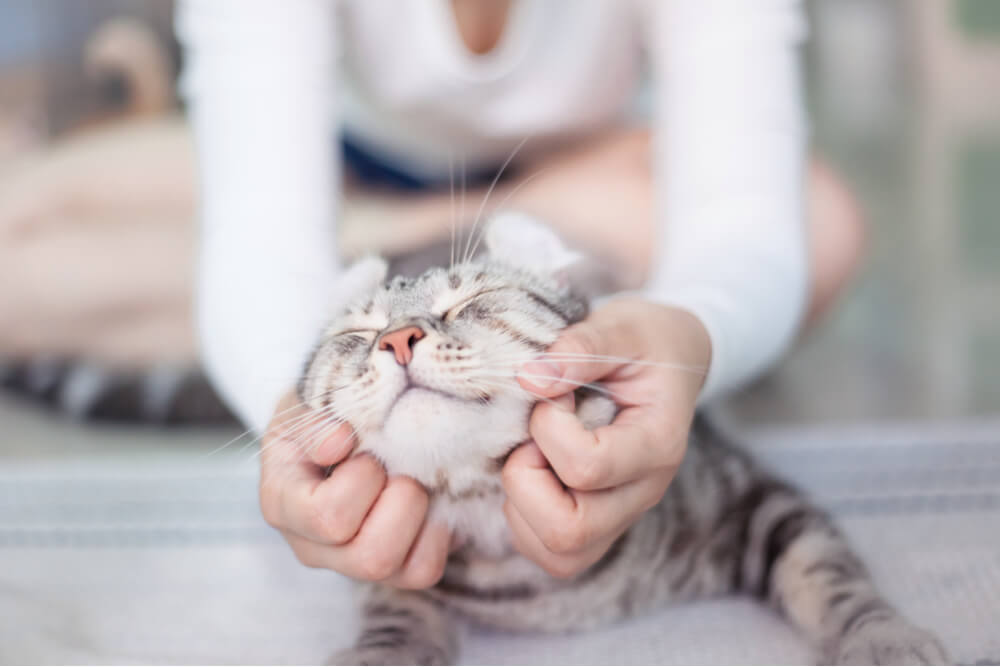
Your cat choosing to come and snuggle with you is likely a reflection of this instinctual behavior.
Studies into cat behavior have shown that not every cat has the same social desire. Their social needs can be considered on a spectrum, with some cats happy for cuddles all day, every day, and others living a more aloof lifestyle.
Due to this, not every cat is going to feel comfortable sleeping on their cat parent. This is not a reflection of your cat’s relationship or trust with you, but instead, your cat’s internal need for companionship. More aloof cats may spend time with you in different ways to show their social bond; simply choosing to be in the same room as you may be enough social contact for your cat.
If your kitty doesn’t decide to come for cuddles, don’t try and force it. It is essential to respect the social boundaries your cat puts in place, as forcing contact can lead to the development of stress, anxiety, or fear behaviors. Sadly, not every cat is cuddly, but your kitty will still find ways to convey love—they just might be subtle!
Is My Cat Laying On Me, Healing Me?
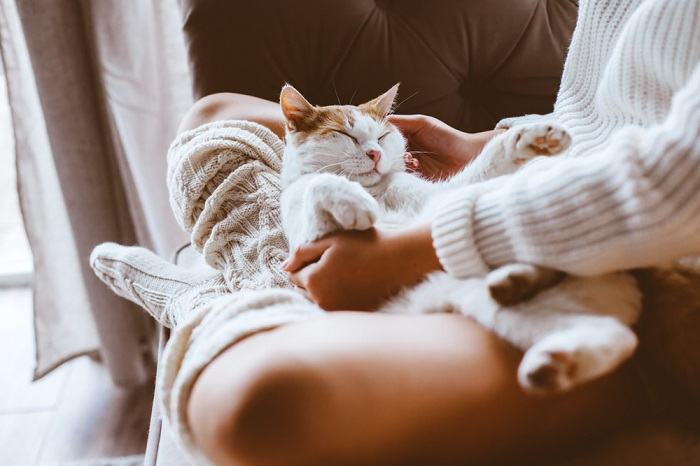
While there is no scientific evidence to support this, some have hypothesized that the frequency of a cat’s purr, which sits around 25 to 100Hz, may benefit bone and soft tissue healing. This is because this is a similar frequency to devices used in therapeutic medicine for humans.
Questions have been raised about whether cats use their purr as a built-in healing tool for self-repair. While we don’t have an evidence base to support these theories, there are controlled scientific studies that show the benefit of reducing human stress and anxiety by interacting with and petting animals.
So, while we don’t know if your cat laying on you is helping your physical ailments, we can be pretty certain it’s doing all kinds of good for your mental well-being!
Final Thoughts
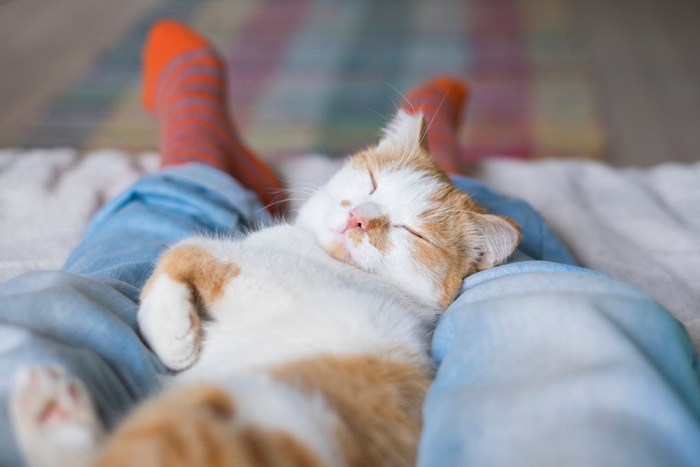
The reason your furry friend chooses to curl up on the couch with you is likely multifactorial, but your kitty snuggling up with you is the ultimate sign of trust in your relationship.
Though cats more often than not choose an inopportune time to get comfy, enjoy this bonding time with your cat. Offer a few pets if you cat likes them and turn on another episode of your favorite TV show; everything else can wait when kitty cuddles are involved!
-
Crowell-Davis, S.L. (2007). Cat Behaviour: Social Organization, Communication And Development. In: Rochlitz, I. (eds) The Welfare Of Cats. Animal Welfare, vol 3. Springer, Dordrecht. https://link.springer.com/chapter/10.1007/978-1-4020-3227-1_1 Retrieved 24th June 2022.
-
Ellis. S et al. (2013) AAFP and ISFM Feline Environmental Needs Guidelines. Journal of Feline Medicine and Surgery. 15 219-230 DOI https://doi.org/10.1177/1098612X13477537 Retrieved 24th Jun 2022
-
Muggenthaler. E (2001) The felid purr: A healing mechanism? The Journal of the Acoustical Society of America 110: 2666 DOI https://doi.org/10.1121/1.4777098 Retrieved 24th June 2022
-
Shiloh. S et al (2003) Reduction of state-anxiety by petting animals in a controlled laboratory experiment. Anxiety, stress and coping: An international journal. 16:4 DOI https://doi.org/10.1080/1061580031000091582 Retrieved 24th June 2022
